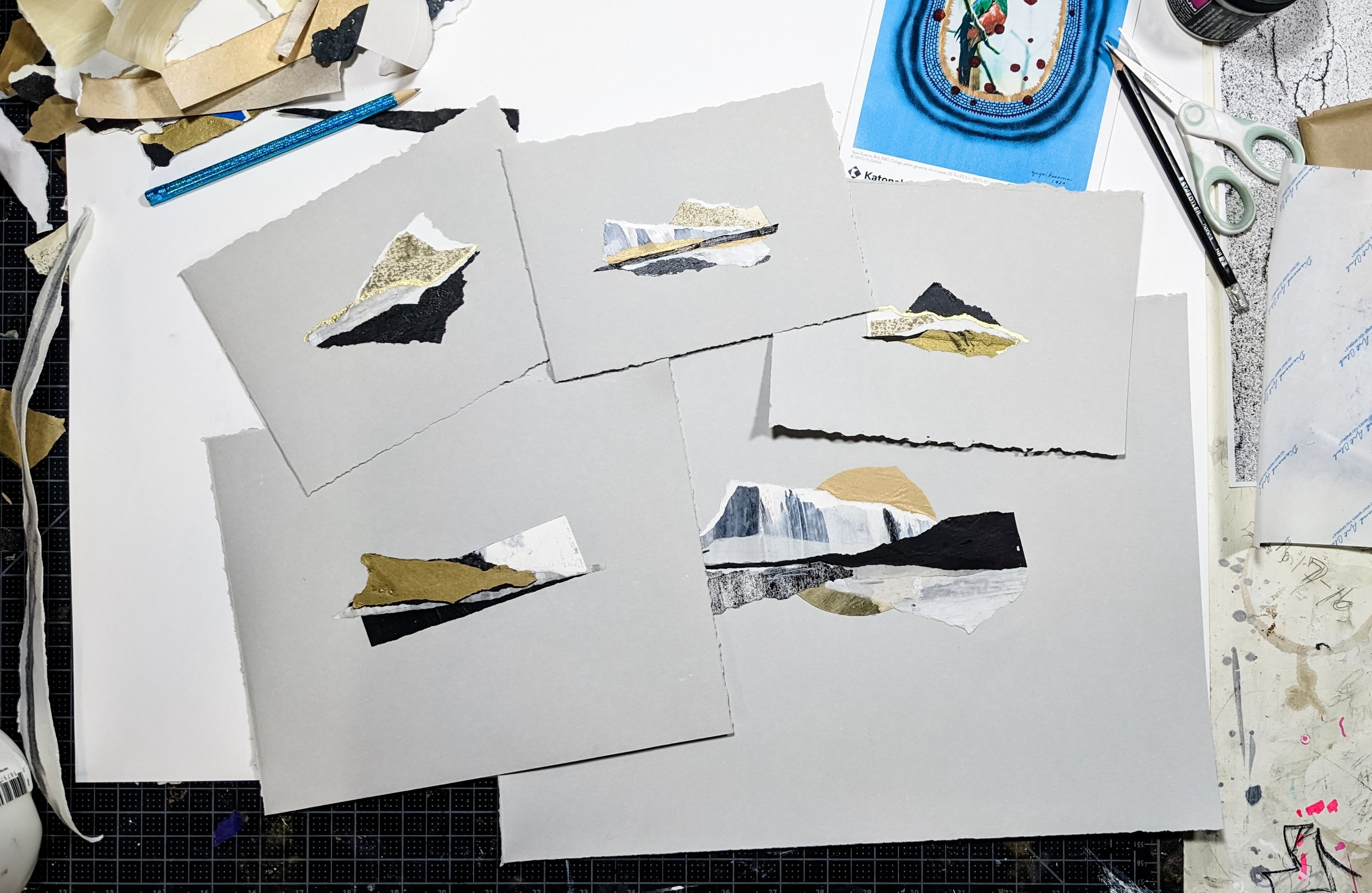What’s Collage?
A Guide to Understanding this Accessible Yet Complex Art Form
Collages in progress in Allison’s studio
Collage is an art form made up of overlapping pieces of material, such as photographs, fabric, colored and textured paper, and other types of mixed media. The process focuses on selecting materials, cutting them into a desired shape, arranging them, and pasting them onto a chosen surface.
Unlike painting or sculpture, collage does not rely on realistic rendering or mimicking the physical world. The artistry of collage lies in envisioning connections between unexpected elements, then bringing them to life by creatively choosing, arranging, and affixing. It requires an innovative eye for combining things in a new way along with instincts for what works well together. While less technical training is involved compared to classical disciplines, collage opens up artmaking without sacrificing complexity or impact. The term "collage" comes from the French word "coller" meaning "to glue." But effective use of adhesive is just one aspect; gathering and repurposing fragments is the true heart of the practice.
Pancratium maritimum (Hexandria monogynia), Sea daffodil, 1778 by Mary Delany
The origins of collage can be traced back over a thousand years to examples from 1100s Japan, when calligraphers began to apply glued paper, using texts on surfaces, when writing their poems. In Western art history, some consider Mary Delaney's 18th-century mixed media collages employing paint, paper, and plant materials to be the first in the medium. However, as collage was largely created by women, it was dismissed as craft and not regarded as fine art until Georges Braque and Pablo Picasso popularized it in the early 20th century. Other important collage artists that followed include Hannah Höch, Kara Walker, and Nancy Spero. Though Picasso and Braque receive much credit, in reality, collage has long been a global art form pioneered by women.
Hannah Höch, Cut with the Kitchen Knife Dada Through the Last Weimar Beer-Belly Cultural Epoch of Germany, 1919–1920, collage, mixed media, (Nationalgalerie, Staatliche Museen, Berlin)
There are many, many different ways to make a collage, but the four primary forms of collage are:
Analog Collage: Created manually using paper cut, arranged, and glued by hand to form an image.
Digital Collage: Formed with the aid of computer software by layering digital images and graphics.
Mixed Media Collage: Incorporates a variety of materials along with paper, such as paint, textiles, or found objects.
Photomontage: Composed exclusively from photographic images cut and assembled into a seamless whole.
While different in techniques, all collage forms share an anti-aesthetic, elevating the everyday into high art, which defined avant-garde movements of the early 20th century. Collage in all its forms acted as a revolutionary medium, defying conventions and bourgeois culture.
Stay tuned for more posts delving into why I am personally drawn to collage as an art form and creative practice!
In the meantime, go explore my collages made with handmade paper, found papers, and gold leaf details:


